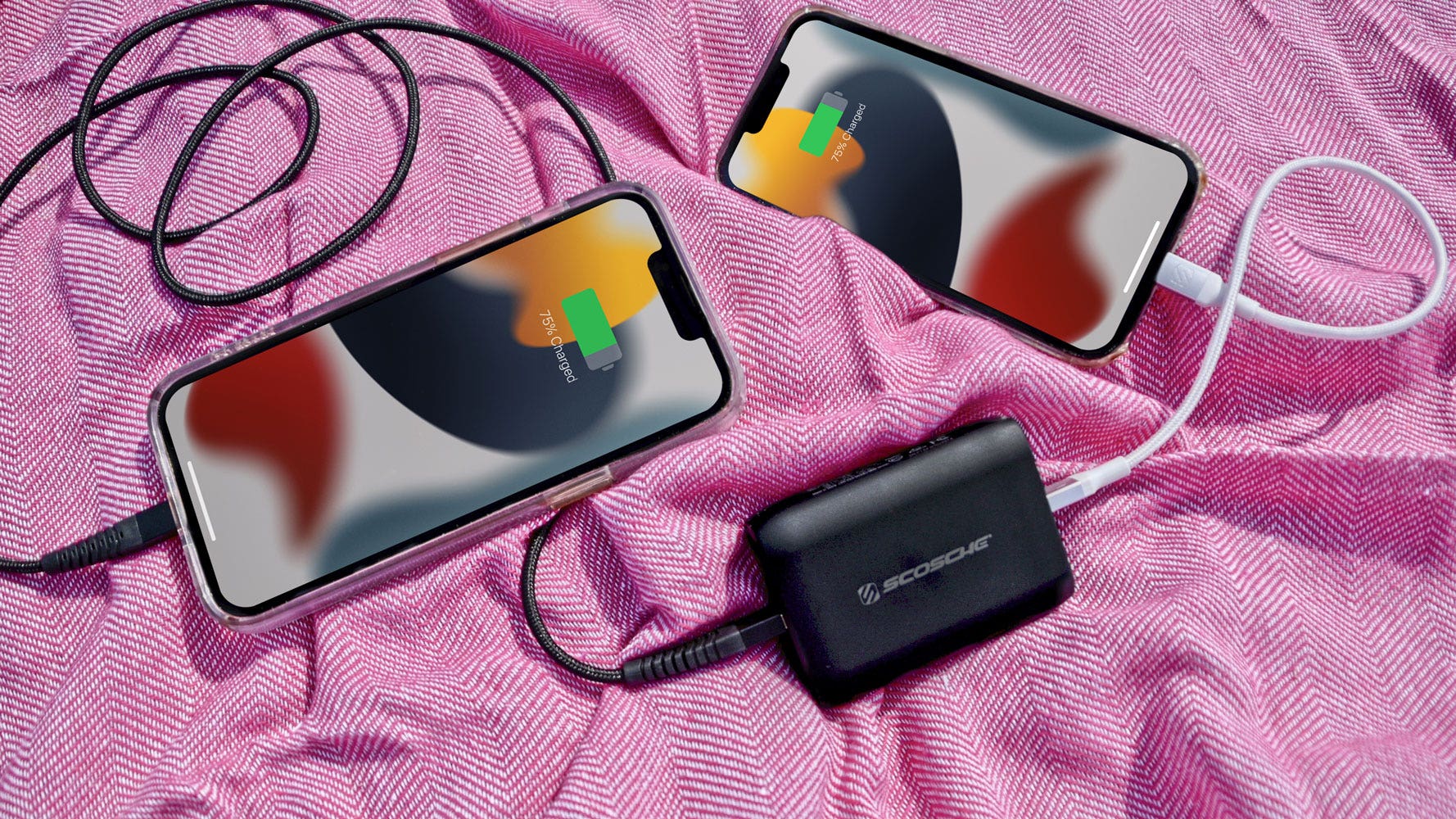Demystifying mAh Battery Capacity & Its Significance

In our modern world, where smartphones, laptops, and other electronic devices have become an integral part of our lives, understanding battery capacity is crucial. So, let's demystify mAh battery capacity and explore its significance in the world of technology.
Understanding Battery Capacity: The Basics
Before diving into the details, let's start with the basics of battery capacity. In simple terms, mAh stands for milliampere-hour. It is a unit used to measure the amount of electric charge a battery can hold over time. The higher the mAh rating, the longer the battery can power a device.
What is mAh?
mAh is a measure of how much charge a battery can deliver over time. It represents the battery's capacity to store electrical energy. For example, a battery rated at 3000 mAh can deliver 3000 milliamperes of current for one hour before it is completely drained.
Understanding the concept of mAh is crucial when it comes to choosing the right battery for your electronic devices. Different devices have different power requirements, and knowing the mAh rating can help you determine how long the battery will last before needing to be recharged. It's important to note that mAh is not the only factor to consider when evaluating battery performance, but it is certainly a significant one.
When comparing batteries with different mAh ratings, it's important to keep in mind that higher mAh does not necessarily mean better performance in all cases. While a higher mAh rating generally indicates a longer battery life, it also means a larger and heavier battery. This can be a trade-off, especially for portable devices where size and weight are important factors.
The Role of Battery Capacity in Device Performance
Battery capacity plays a vital role in determining the overall performance of electronic devices. Higher mAh ratings indicate that a battery can power a device for a longer duration, allowing users to enjoy uninterrupted usage. This is especially important for power-hungry applications like gaming and multimedia consumption.
Imagine being in the middle of an intense gaming session on your smartphone, only to have the battery die on you. Frustrating, right? This is where battery capacity comes into play. A device with a higher mAh rating will last longer, allowing you to fully immerse yourself in your favorite games without worrying about running out of power.
Moreover, battery capacity is not just about convenience and uninterrupted usage. It also affects the overall lifespan of the device. When a battery has a higher capacity, it doesn't need to be charged as frequently, reducing the strain on the battery and potentially prolonging its lifespan. This is particularly important for devices with non-removable batteries, where replacing the battery is not an easy option.
It's worth noting that battery capacity is not the only factor that determines device performance. Factors like software optimization, display brightness, and background processes also play a significant role. However, having a battery with a higher capacity certainly gives you an advantage by providing more power to fuel your device's performance.
The Science Behind mAh Battery Capacity
Now, let's delve deeper into the science behind mAh battery capacity and explore how it is measured.
When it comes to measuring mAh, it's important to understand that it stands for milliampere-hour. This unit of measurement quantifies the amount of electrical charge a battery can hold. The higher the mAh rating, the longer the battery is expected to last.
So, how is mAh measured? It's a fascinating process that involves multiplying the current flowing through a battery by the time it takes for the battery to discharge completely. This measurement is performed under specific laboratory conditions to ensure accuracy and consistency.
During the measurement process, the battery is subjected to controlled discharge cycles. These cycles mimic real-world usage scenarios to provide an accurate representation of the battery's performance. The discharge rate, temperature, and other variables are carefully monitored to ensure reliable results.
Factors Influencing Battery Capacity
Now that we have a basic understanding of how mAh is measured, let's explore the various factors that can influence the battery capacity of electronic devices.
One of the key factors is the efficiency of the battery's chemical composition. Different battery chemistries, such as lithium-ion, nickel-metal hydride, and lead-acid, have varying energy densities and discharge characteristics. Manufacturers continuously research and develop new battery chemistries to improve energy storage capabilities.
Another important factor is the device's power management system. Modern electronic devices are equipped with sophisticated power management systems that optimize energy usage and extend battery life. These systems regulate the power flow to different components, ensuring efficient operation and minimizing energy wastage.
Usage patterns also play a significant role in battery capacity. The way we use our devices, such as the types of applications we run, the screen brightness, and the connectivity options we utilize, can impact the overall battery life. For example, running resource-intensive apps or keeping the screen brightness at maximum will drain the battery faster compared to using the device for basic tasks.
Manufacturers are constantly striving to improve these factors to enhance battery performance. Through advancements in battery technology and power management systems, they aim to provide users with longer-lasting devices that can keep up with their demanding needs.
The Significance of mAh in Everyday Electronics
Now that we understand the basics and the science behind mAh battery capacity, let's explore its significance in everyday electronics.
mAh, or milliampere-hour, is a unit used to measure the capacity of a battery. It represents the amount of electrical charge a battery can hold and deliver over time. The higher the mAh rating, the longer the battery can last before needing to be recharged.
When it comes to smartphones, mAh plays a crucial role in determining the device's endurance. Smartphones have become an essential tool for communication, entertainment, and productivity. With higher mAh ratings, smartphones can offer longer battery life, allowing users to stay connected and make the most of their device throughout the day.
Imagine being able to browse the internet, stream videos, play games, and use various apps without constantly worrying about your battery dying. A smartphone with a high mAh rating can provide that peace of mind, ensuring that you can stay connected and entertained without interruptions.
But it's not just smartphones that benefit from higher mAh ratings. Laptops, too, rely on mAh to provide extended usage periods. In today's fast-paced world, where remote work and frequent travel have become the norm, having a laptop with a high mAh battery can be a game-changer.
People who work remotely or travel frequently can now be confident that their laptops won't run out of power during important tasks or presentations. They can work on their projects, attend virtual meetings, and stay productive without the constant need to search for a power outlet.
Additionally, higher mAh ratings in laptop batteries also mean that users can enjoy longer periods of entertainment. Whether it's watching movies, editing videos, or playing graphics-intensive games, a laptop with a high mAh battery can provide the necessary power to indulge in these activities without worrying about running out of juice.
Furthermore, the significance of mAh extends beyond smartphones and laptops. Other everyday electronics such as tablets, e-readers, portable speakers, and smartwatches also benefit from higher mAh ratings. These devices, which have become integral parts of our lives, can offer longer usage times, making them more convenient and reliable.
In conclusion, mAh plays a crucial role in determining the endurance and usability of everyday electronics. With higher mAh ratings, devices like smartphones, laptops, tablets, and more can provide extended battery life, allowing users to stay connected, productive, and entertained without the constant need for recharging.
So, the next time you're in the market for a new electronic device, make sure to consider the mAh rating and choose one that suits your needs and lifestyle.
Choosing the Right mAh for Your Needs
Choosing the right mAh for your needs requires careful consideration of several factors. Let's dive deeper into these factors to help you make an informed decision.
Balancing Battery Capacity and Device Size
While higher mAh ratings typically translate to longer battery life, it's essential to strike a balance between battery capacity and device size. Smaller devices, such as smartphones and wearables, may have limited space for battery placement, which can impact the maximum mAh achievable within a given form factor.
Manufacturers often face the challenge of fitting a larger battery into a compact device without compromising its design and functionality. This requires innovative engineering and optimization to ensure that the device remains sleek and portable while still offering a satisfactory battery life.
When choosing a device, consider your usage patterns and the portability you require. If you're constantly on the go and need a device that can fit comfortably in your pocket or bag, you may have to accept a slightly lower mAh rating. On the other hand, if battery life is your top priority and you don't mind a bulkier device, you can opt for a higher mAh rating.
Battery Capacity and Charging Time
It's important to note that higher mAh ratings may require longer charging times. Manufacturers often optimize the charging speed to balance convenience and battery longevity. Rapid charging technologies, such as Quick Charge and USB Power Delivery, have become increasingly popular, allowing users to charge their devices quickly without compromising the overall battery life.
When selecting a device, consider the trade-off between charging time and extended usage. If you often find yourself in situations where you need a quick battery boost, choosing a device with fast charging capabilities can be a game-changer. However, if you have the luxury of time and prefer a slower, more gentle charge, you can opt for a device with a larger battery capacity.
It's worth mentioning that battery capacity isn't the sole determinant of charging time. Other factors, such as the charging cable, power adapter, and the device's internal charging circuitry, also play a role. Therefore, it's essential to consider the overall charging ecosystem when evaluating a device's charging capabilities.
By considering the balance between battery capacity, device size, and charging time, you can make an informed decision when choosing a device that meets your specific needs. Remember, there is no one-size-fits-all solution, and what works for one person may not work for another. Take the time to evaluate your requirements and preferences to find the perfect mAh rating for your device.


Future Trends in Battery Capacity
As technology continues to evolve, so does battery capacity. Let's take a look at the future trends in mAh battery capacity.
Innovations in Battery Technology
Researchers and engineers are constantly working on innovative battery technologies to increase mAh capacity while reducing charging times. Advancements like solid-state batteries, graphene-based batteries, and other emerging technologies show promising potential for enhancing our devices' battery life.
The Impact of Increasing mAh on the Tech Industry
The increasing mAh capacity of batteries has far-reaching implications for the tech industry. It enables the development of more powerful devices, fuels the growth of mobile applications, and drives technological innovation. Consumers can expect longer battery life and improved device performance, resulting in a more seamless and efficient user experience.
As technology continues to advance, understanding mAh battery capacity and its significance is crucial for making informed decisions when purchasing smartphones, laptops, and other electronic devices. By considering the mAh rating alongside other factors, such as device size and charging time, users can choose devices that best cater to their needs.
Conclusion
In conclusion, mAh battery capacity is the cornerstone of device endurance and performance. With higher mAh ratings, users can enjoy extended device usage, ensuring they stay connected and productive throughout the day. As battery technology continues to evolve, we can look forward to even more significant advancements in mAh capacity, revolutionizing the tech industry and enhancing our everyday lives.